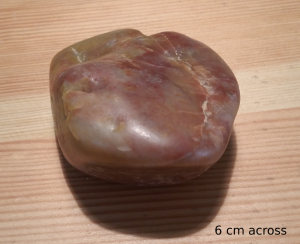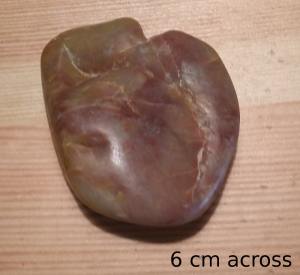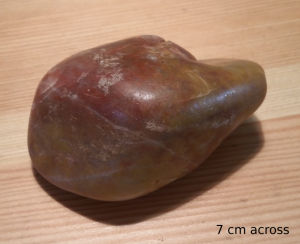Gastroliths in the Morrison Fm
I’ve recently returned from a trip to New Mexico for the field methods class of which I am a TA. It was an awesome trip and great experience for me in teaching, but that’s another story. The field area we work in is within the Jurrassic Morrison depositional basin (active roughly during the Kimmeridigan ~157-152 Ma). Within the Morrison Formation is the Brushy Basin member (abbreviated Jmb), renowned for the abundance of dinosaur fossils found within the rock unit. Jmb is found within our field area, so I told the students to keep an eye out for any good finds when walking with the unit.
Although Jmb has an abundance of fossils, we didn’t find any. BUT, the Morrison is also famous for its bounty of another paleontological tool, the gastrolith. Gastroliths are interpreted as stones that dinosaurs would ingest in order to aid with breaking down food and aiding in digestion. A gastrolith may be more generally defined as “a hard object of no caloric value (e.g., a stone, natural or pathological concretion) which is, or was, retained in the digestive tract of an animal” [dinosaurhunter].
There are gastroliths all over within the Jmb, some small, and some larger. Below are three photos of the “best” gastrolith I found on our trip.



Gastroliths are often recognized by their very smoothed and polished appearance (some other examples here wiki-gastro). I suppose that to be certain my rock is a gastrolith, and not simply a rock polished by water or wind, it should be found in association with the remains of the animal it was within. Regardless, I’m really glad to be able to add a rock with such an interesting back-story to my collection.
